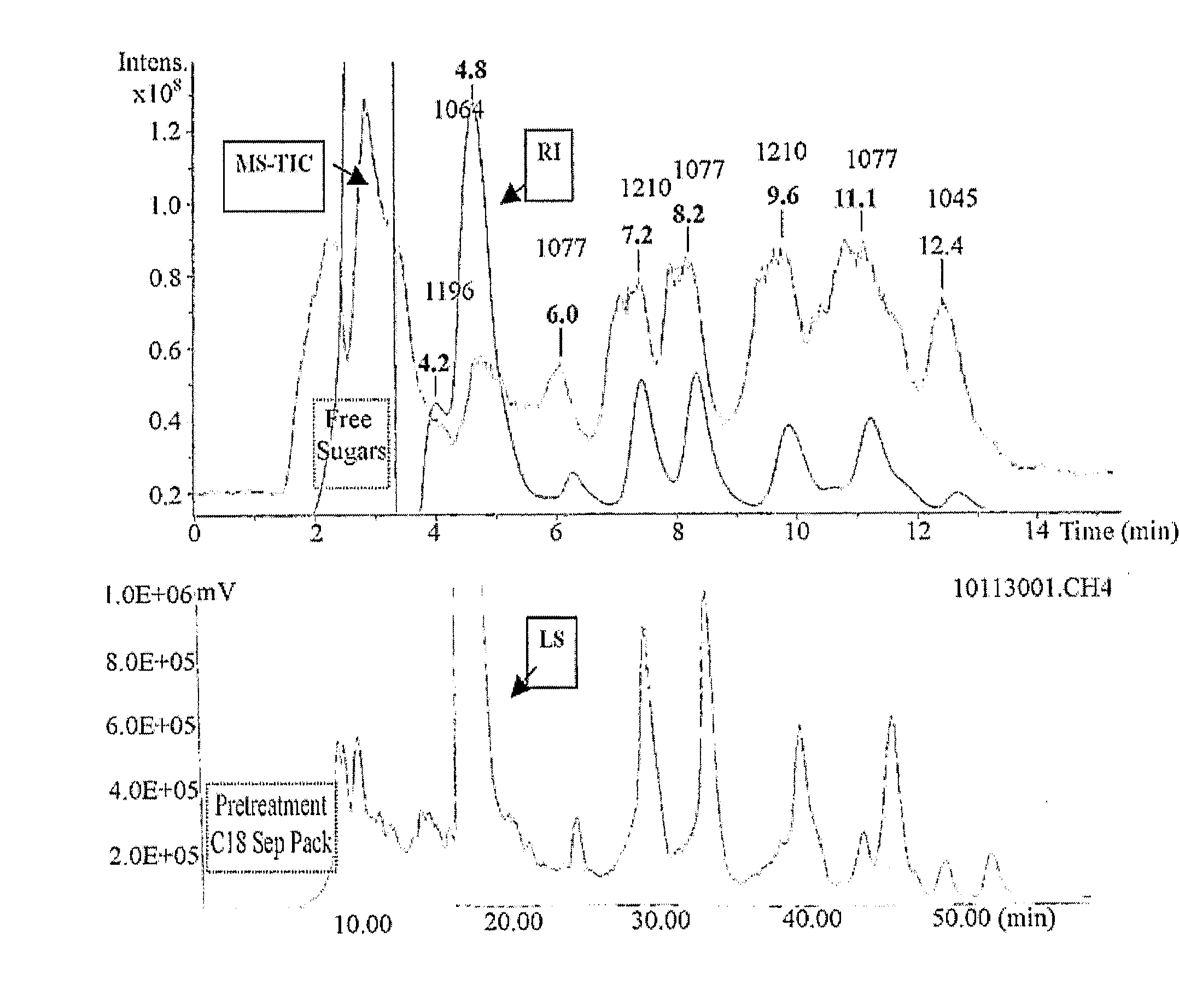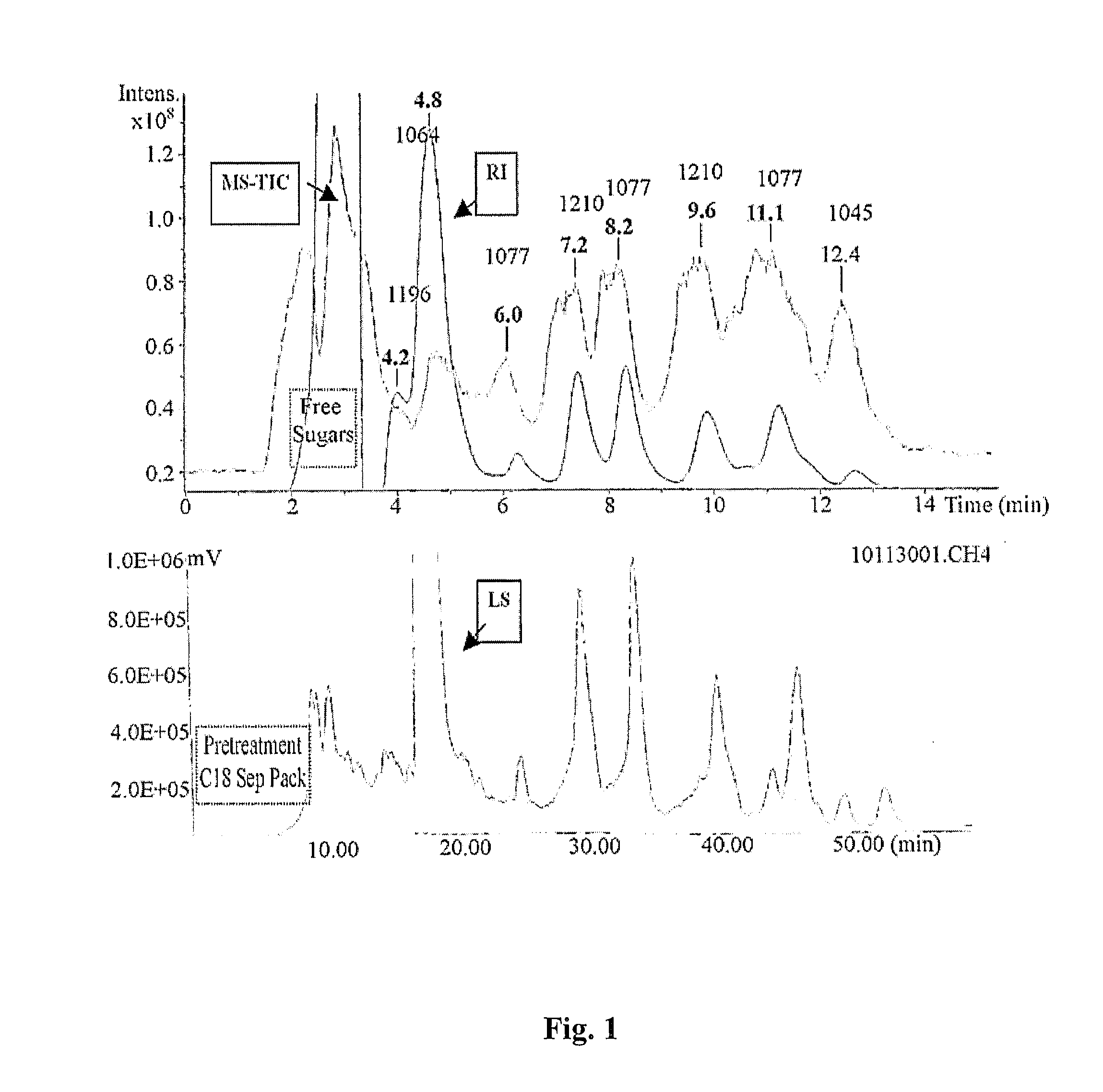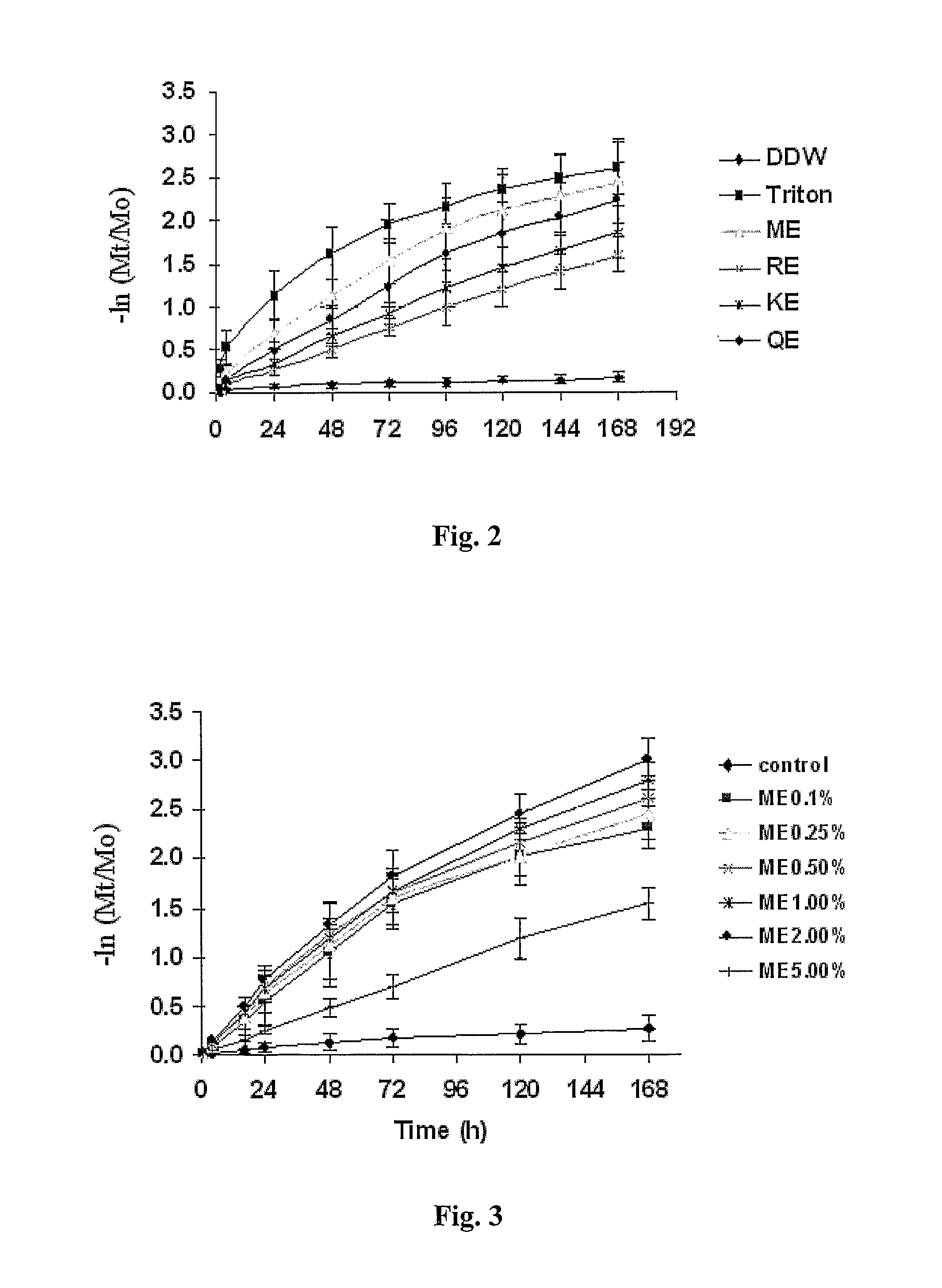Balanites Aegyptiaca Saponins and Uses Thereof
- Summary
- Abstract
- Description
- Claims
- Application Information
AI Technical Summary
Benefits of technology
Problems solved by technology
Method used
Image
Examples
example 1
Selection of Balanites aegyptiaca Superior Genotype Developing in Semi-Arid Area Using Low Quality Saline and Sewage Water
[0066](i) B. aegyptiaca Germplasm Collection.
[0067]Matured fruits were collected from various populations distributed in the whole geographic range of B. aegyptiaca worldwide distribution areas in the year 1996. B. aegyptiaca seeds were produced from fruits collected from two sites in Djibouti and Eritrea areas; two sites in the Dakar area, Senegal; two sites in the Bamako area, Mali; and two areas in Jodhpur, India. B. aegyptiaca fruits were collected from Israeli genotype trees in Ein Gedi, Eilat, Samar, Sapir, Sde Taiman and Kfar Rupin (considered as the northernmost limit of Balanites distribution—35°25′N). The Balanites trees of Ein Gedi and the Samar areas seemed wild vegetation whereas the Eilat, Sapir, Sde Taiman and Kfar Rupin trees were probably based on a local Israeli collection from some years ago. The Balanites plant species were identified taxonomi...
example 2
Extraction of Balanites aegyptiaca Saponins (Small Scale)
[0079](i) Saponin Extraction from the Balanites Fruits.
[0080]Fully ripened fruits of B. aegyptiaca were collected from Balanites aegyptiaca grown at Kibutz Samar. The epicarp (outer cover) was removed by hand and the mesocarp (pulp) was manually extracted with a knife. The mesocarps were first freeze-dried with a lyophilizer (Christ Alpha 1-4, Germany) and then stored in an electric desiccator (Sanplatec Corp., Israel) for further use.
[0081]For the extraction, the freeze-dried mesocarp was pulverized, combined with methanol (1:10) and shaken continuously overnight in a high-speed electric shaker (Tuttnauer, Jerusalem, Israel) followed by centrifugation (3500 rpm, 18 min, 20° C.), and supernatants were collected. The residue was further extracted twice using vortex and centrifugation. After three successive extractions, the supernatant was clear. All the supernatants were combined and the methanol was evaporated off in a rotary...
example 3
Pilot Scale Extraction of Balanites aegyptiaca Mesocarp Saponins
[0087]Batches (20 kg) of whole Balanites fruits were placed in a 150 kg rotating pan containing about 80 liters of water. The pan was rotated for several hours until the mesocarp was dissolved and washed well from the seeds. The seeds were separated from the aqueous solution containing the mesocarp glycosides and the solution was filtered to remove solid residues. A sample of the aqueous solution was defatted with light petroleum ether (b.p. 60-80° C.) and then dried by lyophilization. The dried crystallized glycoside batch was dissolved in methanol and loaded on a C18 Sep-Pack (Waters) large-scale column. The column was first washed well with water to elute the free sugars and then washed with methanol to elute the partially purified glycoside conjugated saponins.
PUM
| Property | Measurement | Unit |
|---|---|---|
| Temperature | aaaaa | aaaaa |
| Temperature | aaaaa | aaaaa |
| Temperature | aaaaa | aaaaa |
Abstract
Description
Claims
Application Information
 Login to View More
Login to View More - R&D
- Intellectual Property
- Life Sciences
- Materials
- Tech Scout
- Unparalleled Data Quality
- Higher Quality Content
- 60% Fewer Hallucinations
Browse by: Latest US Patents, China's latest patents, Technical Efficacy Thesaurus, Application Domain, Technology Topic, Popular Technical Reports.
© 2025 PatSnap. All rights reserved.Legal|Privacy policy|Modern Slavery Act Transparency Statement|Sitemap|About US| Contact US: help@patsnap.com



